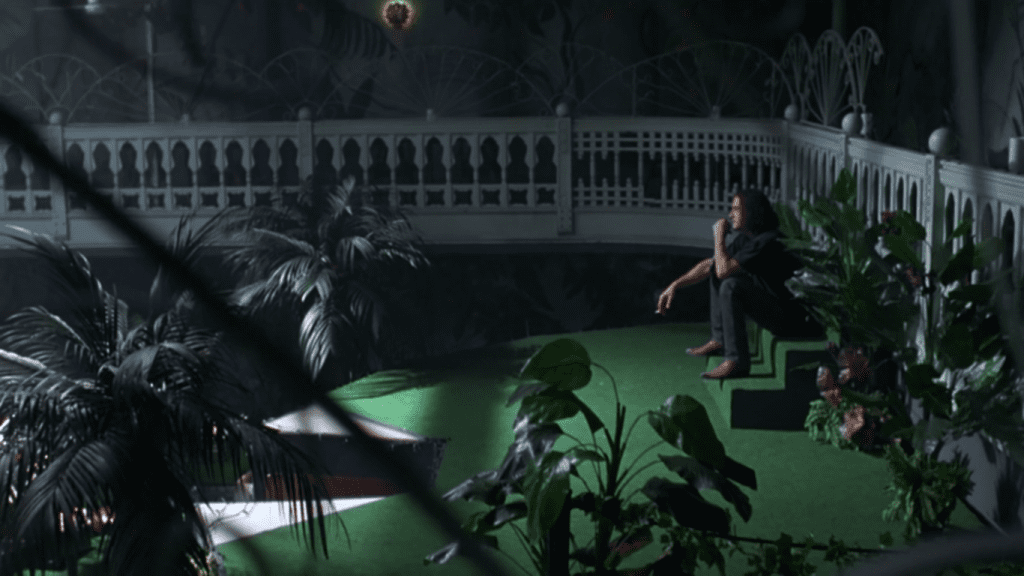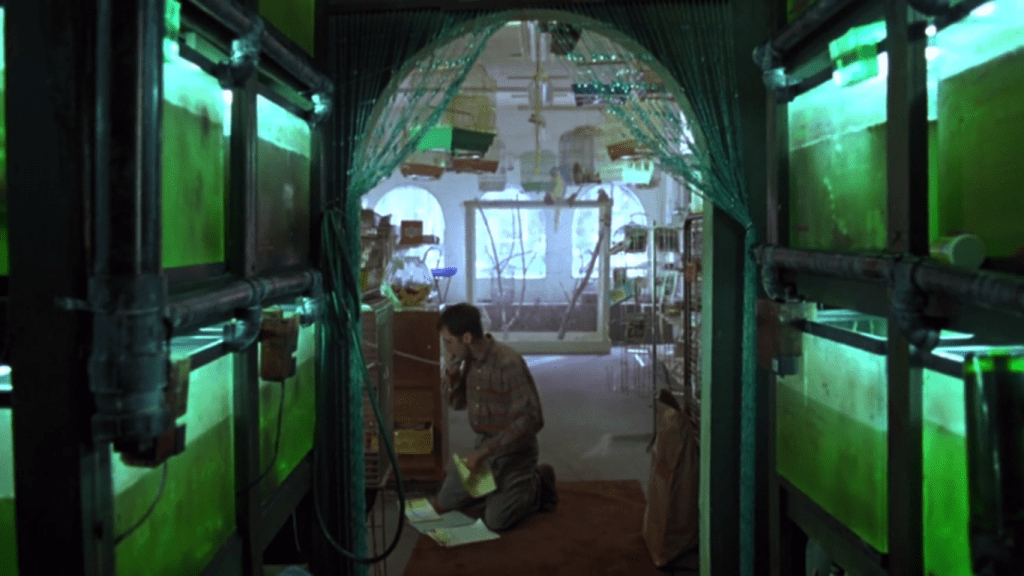Dead Sexy: A Fortnightly Column on Erotic Thrillers
The pleasure and pain of a striptease is structured around the anticipation of a reveal.
Item by item, the dancer sheds their clothing until their body is bare: a vulnerable corporeality that titilates and disarms the watcher. Exotica, Atom Egoyan’s 1995 masterpiece, structures itself as such, gently unveiling more and more of its storyline slowly and teasingly. As each layer is delicately shed, we only become more involved and emotional; when we get the full reveal, literally and metaphorically, we’re awash with an intense feeling of catharsis.
Similar to the way Magnolia or even Love Actually give us snippets of an ensemble cast, in Exotica, we aren’t sure how the group of disparate characters are connected. Eschewing the traditional three-part structure to film writing, Egoyan gradually allows us more clarity as the film goes on, like a camera imperceptibly going into focus. Each character has something to hide that they must gradually reveal to the audience, including how their secret relates to one another. Thomas is a pet shop owner who imports the eggs of exotic birds in an undercover operation worth hundreds of thousands of dollars. Francis is the depressed tax auditor hired to uncover his operation. He visits exotic dancer Christina every other day at the strip club she works at. She wars with her ex-lover Eric, the club’s emcee, who taunts her at every opportunity. He has impregnated the club’s owner Zoe (meaning ‘life’ in Greek), who, like Thomas, I suppose, is metaphorically incubating an egg of her own. And so the circle of life continues. These are tales of people desperately in need of love and care, or they will splatter.

Despite its marketing as such, as an erotic thriller, Exotica is not particularly erotic and hardly thrilling. There are no sex scenes, a distinct lack of lust and no crime that is actually followed through with. The tone is more elegiac and contemplative, a philosophical mystery of sorts. Many who love the genre for its femme fatales and trench-coated cops may have been let down by this quietly heartwrenching film about the manifestation of grief. It’s about looking, too, but it would be too simple and trite to call Exotica a film about voyeurism simply because of its setting in a strip club. The space is structured like a panopticon—a circular prison with cells arranged around a central well, from which prisoners could at all times be watched. The club’s two-way mirrors force characters to confront both the way that they see themselves and the way that they are perceived by others.
With the plot’s aforementioned secretive nature being part and parcel of the film’s structure, the use of the song “Everybody Knows” is somewhat ironic. Leonard Cohen’s sexy, gravelly baritone repeats those two words over and over as Christina does her Catholic schoolgirl dance routine, gyrating as he sings: “Everybody knows that it’s now or never / Everybody knows that it’s me or you / And everybody knows that you live forever / When you’ve done a line or two.” Later on, Eric schemes to have Francis barred from the stripclub by encouraging him to touch Christina, which is against the club rules. “She’s into touching,” he lies. “Everybody knows.”
In a column instalment last month, I discussed how William Friedkin’s Jade made lazy, offensive links to Asian culture that only served to fetishize women and made no efforts to engage with the imagery being deployed. Egyptian-born Egoyan plays on the imagery of bathhouses and gilded furniture, with the interiors of Exotica serving to directly critique this kind of Orientalism that has long been associated with sex work. “Just because they’re exotic,” Francis says in reference to Thomas’ birds, “doesn’t mean they can’t endure extremes.” The natural (lush ferns and greenery) and the synthetic (elaborate paintings, stark lighting) clash headily, and the opening suggests as such. A slowly tracking camera films the club’s foliage, dry ice and spotlight, as Mychael Danna’s haunting score – which draws inspiration from Middle Eastern and Indian music, and was recorded in Bombay – kicks in. We eventually happen upon two security guards gazing through a window at Thomas with the opening line: “You have to ask yourself, what brought the person to this point?” Something that, evidently, becomes the eternal question of the entire film.
The questionable opulence of this seedy location bolsters the film’s religious imagery, with the club acting as an ersatz Garden of Eden (one of Danna’s tracks is entitled “Snake Dance”). The use of the colour green is imperative in understanding Exotica’s visual language, representing the fine line between nature and artifice in yet another ploy to make us question what we think we know. While Eric can conjure up bravado in his position as emcee, clad in his parrot-green work shirt, preening high above the punters like some kind of deity in his DJ booth, back at his apartment we see that his life is void of colour: barely a step above a prison cell with stained white walls, a mattress and a cluster of empty bottles.
In the time ‘before’ the plot’s yet-unknown tragedy, the colour green features in luscious fields and family photographs. Post-tragedy, green appears to crudely light up murky fish tanks, neon lights in seedy clubs and is painted on dirty toilet cubicles that entrap characters at their most vulnerable. One relationship that is interesting to examine is that between Francis and Christina; it’s originally assumed that Francis is lusting after the dancer, who he pays for private dances – until we learn that she is his “angel” who he feels he must “protect,” for reasons that become clearer as the film progresses. The angelic imagery (her oversized white shirt, unbuttoned and flowing by her sides, function as wings) only bolsters the film’s religious symbolism, but also makes sense considering its philosophical tone.
In this hinterland of lost souls and grief, only the most grandiose metaphor makes sense to explore the characters’ pain. It’s in direct contradiction to the world portrayed on a surface level; porny schoolgirl fantasies and confusing role-play fall away to reveal fantasies of the asexual kind, fantasies rooted in psychological pain in order to mask tragedies. Exotica is a prime example of the ‘show, don’t tell’ form of filmmaking that entrusts the viewer to seek details and meaning—a true masterpiece of the 1990s and standout in the erotic thriller canon.
Words by Steph Green
Part of Dead Sexy: A Fortnightly Column on Erotic Thrillers
Sign up to receive email alerts when a new column is live
Watch Exotica on Curzon, Amazon or Google Play
Recommended reading
▷“The Seduction of Roots and the Roots of Seduction” in Queer Roots for the Diaspora: Ghosts in the Family Tree by Jarrod Hayes
▷Exotica: Finding a Paradise Lost, a video essay by Digging Deeper
▷“Exotica and the Otherness of Memory” in Film and the City: The Urban Imaginary in Canadian Cinema by George Melnyk




